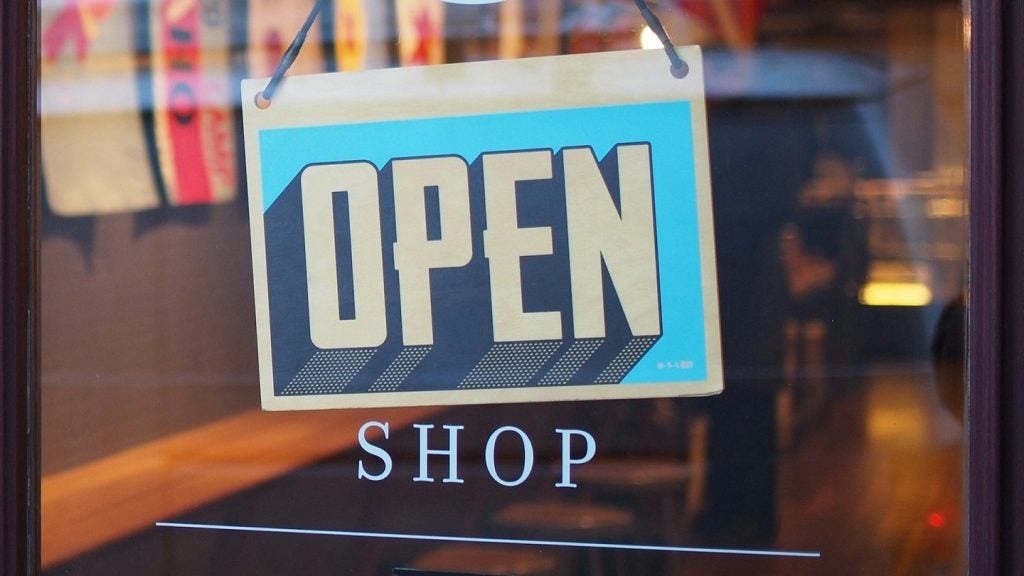Leasing volumes in agriculture are on
the rise as farmers look to release cash to invest in other parts
of their business. Vicky Meek explores the opportunities and
drawbacks for those involved in the sector
As world leaders attempt to grapple with the
problem of how to feed the globe’s rapidly expanding population,
national governments are seeking to ensure more self-sufficiency in
food production. Agriculture has become a greater priority for
politicians than it has been for decades, particularly as
agricultural commodity prices have risen. Prices for foods such as
cereals, oils and particularly sugar have shot up in the last year.
Some of this is short-term – poor weather in Canada, Australia and
Central America has affected yields. But other factors are more
long-term, such as increasing fuel oil prices, population growth
and increasing use of land for bio-fuels.
The result is that policies are increasingly
driven by a need to increase efficiency in the production of food.
“The agricultural market is different from others in that it is
often affected by other considerations than the broader economy,”
says David Walton, head of agriculture at SG Equipment Finance UK.
“The environment for agriculture will be positive for the next 15
to 20 years as politicians place more emphasis on the sector in a
drive for greater self-sufficiency and as food production has
become of more interest generally.”
And the agricultural equipment market plays
well to this overall trend of increased efficiency. Worth $17.9
billion in Europe in 2010, according to Datamonitor, the industry
is expected to grow at a compound annual growth rate of 5.4% to
2015, valuing the market at $23.2 billion by the end of that
year.
It’s an encouraging sign for lessors looking
to enter the agricultural equipment market or build their positions
within it. Added to this are signs that, in some European markets
at least, farmers are expecting to increase their capital
expenditure in this area. A recent survey of 3,000 European farmers
by DLG Trendmonitor Europe found that 55% of German farmers
intended to invest in equipment this year, up 6% on a previous
survey carried out in Autumn 2010. French farmers also saw an
increase in their investment intentions – by 8%. The UK, meanwhile,
registered a 3% decline.
Writing new business
How well do you really know your competitors?
Access the most comprehensive Company Profiles on the market, powered by GlobalData. Save hours of research. Gain competitive edge.

Thank you!
Your download email will arrive shortly
Not ready to buy yet? Download a free sample
We are confident about the unique quality of our Company Profiles. However, we want you to make the most beneficial decision for your business, so we offer a free sample that you can download by submitting the below form
By GlobalDataYet despite these broadly positive trends,
lessors have so far faced an uphill struggle in writing operating
lease business in this asset class. One of the main factors is the
conservatism of many farmers. “Most farmers use simple financing
products, such as hire purchase and loans,” explains Allan Ross,
managing director of First Independent Finance. “There is very
little business done through operating leases in this market.”
One of the issues is that residual values in
agricultural equipment are high and so owning equipment can be
attractive for farmers. This is compounded by the fact that,
because of the seasonality in farming, equipment tends only to be
used for limited amounts of time in the year and so doesn’t need to
be replaced as regularly as in other industries.
Another issue, in the UK, at least, is that
farmers have little incentive to opt for leasing at the moment.
“Before the late 1980s, around 80% of the agricultural equipment
market tended to be leased,” explains Paul McCarthy of PM Business
Consultants. “This was because of the capital allowances regime.
After this changed, the market also changed and now 90% go for HP
products because they can claim capital allowances on their
expenditure. This will change next year and it may be that leasing
is a beneficiary of this – but we don’t know yet.”
The drive for efficiency may also affect the
market positively. “Traditional farmers tend to be more predisposed
to owning their equipment and so leasing has historically only
accounted for approximately 5% of our finance business in the
agriculture sector,” says Tom Meredith, president of the global
food and agriculture business unit at De Lage Landen. “However, we
are starting to see some shift as farms consolidate and larger
farms are more frequently considering operating leases rather than
loans.”
He adds: “Contractors and large production
farmers will typically use leasing more than traditional farmers,
as they place a heavy emphasis on managing their monthly costs.
They will also want to trade more frequently as they seek to keep
equipment only during warranty periods.”
McCarthy agrees. “Farmers are becoming more
business-orientated,” he says. “The larger farms are increasingly
looking at capital investment and asking, ‘what returns am I
getting from this?’ The result may be a move towards contract hire
and operating leases.”
There is some evidence that this may already
be happening. While overall expenditure on equipment by farmers may
have dropped over the last couple of years as farm gate prices have
been volatile, the proportion of spend made through leasing looks
to have increased.
“While the level of business expenditure in
agriculture fell by 34% in the UK in 2009, it has remained steady
since,” says Alexander Baldock, managing director of Lombard.
“Tractor sales, the largest part of all equipment purchases,
dropped over 11% in 2009 and 2010 as farms consolidated, field
sizes increased and tractors became larger and more efficient.
However, there has been a steadying of sales in 2011. Against
lowered investment and tractor sales, the funding provided by
Finance and Leasing Association members has risen steadily with
rises of 10% and 7% in the last two calendar years – Q1 2011 is up
over 12% on Q1 2010. Lombard sales have also grown by 12% in this
period, broadly in line with the FLA market.”
Indeed, some say that this part of the market
has held up better for them than others. “The agriculture market
had been good business for us,” says Marie Dunkley, head of sales
at Hitachi Capital Business Finance. “While other sectors have been
hit by the recession, our agriculture business has grown. And,
while this had traditionally been an HP market, we are seeing an
increased demand for operating leases as people are considering
their financing options.”
And some are saying they are expecting
business to pick up markedly. “There remains pent-up demand in the
sector but, as confidence in the recovery grows, we expect to see
this demand become a reality,” says Baldock. “Within this capital
expenditure, we anticipate that asset finance will see substantial
increase in volume. Asset finance has previously punched below its
weight in the agriculture sector but this will change, partly as
farmers look to replace ageing equipment, but also as they seek to
release cash from equipment via sale and leaseback in order to free
capital to invest in other aspects of farming.”
Good credits
In addition to hopes of growth in leasing in
this area, one of the attractions for funders in this market is the
fact that farmers tend to be good credits. They tend to have very
low borrowing and have assets in the form of land and buildings,
the values of which tend to less affected by industry ups and downs
than would be the case in other sectors. “Following the credit
crisis, many funders became more cautious because of fears of bad
debts and arrears,” says McCarthy. “However, they found that this
wasn’t much of an issue with farmers. Over the last 18 months,
funders have reviewed their books and have come to the conclusions
that, although margins are low in agriculture, so are default rates
and arrears.”
It’s one of the reasons that more funders are
coming into the market. Close Asset Finance is one. It started its
agricultural unit earlier this year. However, realising that the
market was already competitive, the company is targeting a
different market from many others. “We see ourselves as an
alternative to the prime funders,” explains Richard Briscoe,
managing director of CAF. “One of our key points of difference is
that we can offer refinancing packages.” He points to an example of
a dairy farmer that needs to buy cattle. “We wouldn’t finance the
cattle, but we’d finance the farmer’s milking parlour so he’d have
the cash to buy the cattle.”
And there may be more to come. “There is a
renewed focus on agriculture in finance,” says one lessor. “A lot
of people are taking this into consideration right now.”
This, together with the fact that farmers
appear to be good bets, means that margins are generally low in
this asset class. “Agriculture is a very attractive market for
financial services at the moment,” says Meredith. “The global
demand for food has increased, so production volumes will also need
to rise. As a result, farm incomes and the demand for new equipment
are increasing and so, while we have not yet seen a huge number of
new players in this market, pricing has become very
competitive.”
Sector to remain a small part of the
whole
The agricultural market clearly has some
potential for growth as far as leasing is concerned. Yet even the
most optimistic participants would admit that it is unlikely to
increase substantially. Larger farms may be more open to the idea
of leasing, but as farms consolidate, the volume of equipment
bought will reduce. And, while farmers remain good credits, there
are pockets of farming that will be more attractive than others.
For example, while grain producers will have had a bumper few years
as prices have risen, those reliant on these crops as foodstuffs
for animals will have seen much higher input costs. As a result,
credit decisions have to be made carefully. “When we look at
credits, we have to consider how a farmer will cope if input prices
increase,” says Briscoe. “This clearly affects a farmer’s ability
to pay. If grain prices increase year on year, that’s great if
you’re selling it, but not if you’re buying it. You need to look at
each deal commercially rather than simply credit-scoring.”
As Walton says: “It’s a nice market, but it’s
niche and it won’t stand a lot of competition. It will remain a
small section of the overall agricultural finance market. To
succeed, you need to be very efficient and service orientated.”
Data: Changes in Demand for Sections
of the Agricultural Sector
Tractors – Compact (<50 HP)
- Only limited interest noted during the twelve-month period for
compact tractors with interest shown predominantly from the
groundscare sector. - Poor weather during late 2010 and early 2011 resulted in fewer
transactions in this range.
Tractors – Medium (50-149 HP)
- Overall new tractor registrations down during 2010.
- Principal interest seen during the first quarter of 2011 which
encompasses the new registrations in March, following a slight
uplift in late 2010 when compared to first half 2010. - Demand for 100hp tractors increased in early 2011, primarily
from dairy and livestock farmers. - Realisations for used tractors have been strong during the past
12-months as a consequence of increasing new tractor prices.
Tractors – Large (150 HP+)
- Demand increased for tractors up to 250hp as many farmers look
to increase size from circa 150hp, however 300hp and above tractors
have not proved popular in recent months. - Strong demand seen from the export market, with a number of
tractors sold to Poland recently. - Again, realisations for used tractors have been strong during
the past six months as a consequence of increasing new prices.
Combine Harvesters
- New combine sales in the UK increased slightly over the
period. - Strongest demand seen for smaller capacity machines as small
scale farmers opt to buy their own machinery as opposed to
employing contractors. - Second user demand has been strong as many farmers look to
replace older combines which has been partially triggered by
increased grain prices from mid 2010. - The increased grain prices have increased competition for
current available stock.
Handling Equipment
- Overall demand appears down from 2009.
- Operators relying on current machinery rather than
updating.
Tillage
- Limited demand seen for new tillage equipment however we are
aware of recent interest for large capacity implements & drills
as large scale farmers appear to opt out of traditional tillage
methods. - Second user machinery attracting strong interest at collective
sales.
Hay / Silage
- Again a seasonal market, predominantly during the spring /
summer months. - Some demand noted in new large square balers during the last
quarter however demand appears down from 2009.
Sprayers
- Demand noted for large capacity self propelled units with some
manufacturers having extended lead times for new supply.
The above graph represents the views and opinions
of Tallon & Associates and is based upon experience of demand
for equipment, completed sales and market research for the period
July 2010 to July 2011. Demand is measured as the response to asset
re-marketing within a standard 90-day remarketing period. It should
be noted that change in demand will not always have a direct affect
on realisable value.








